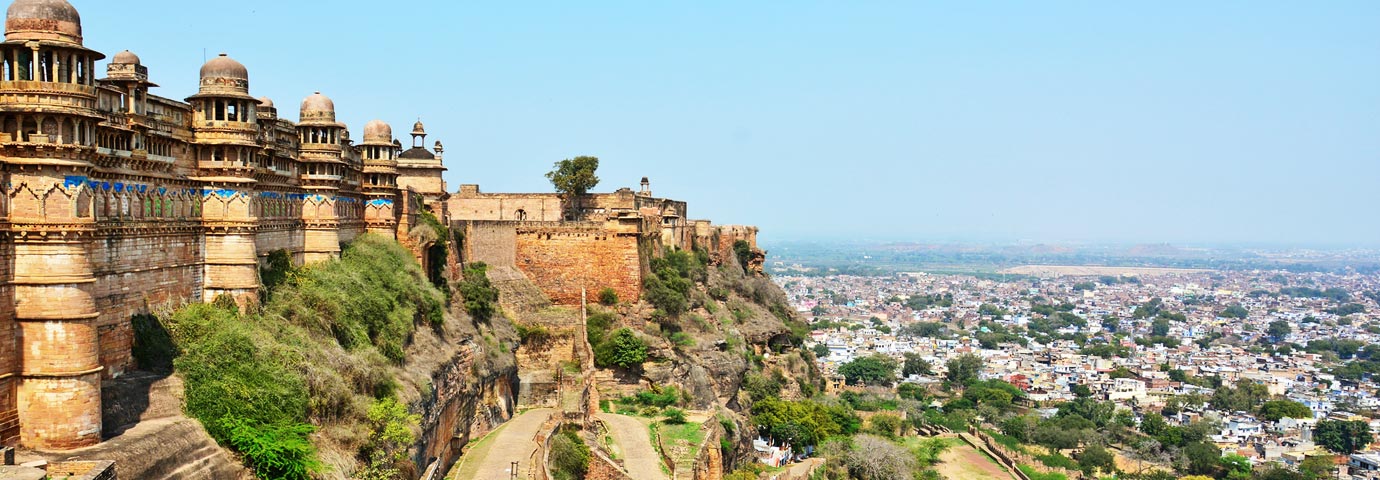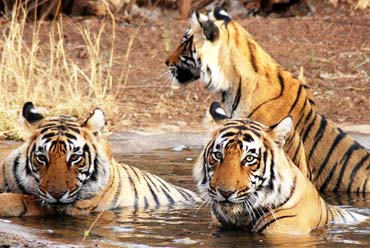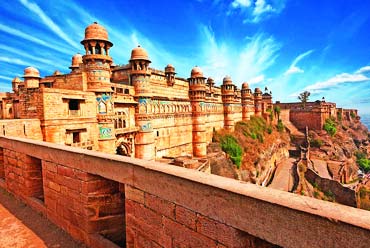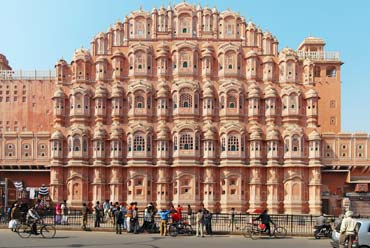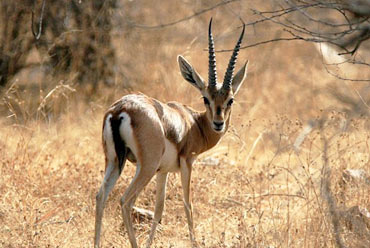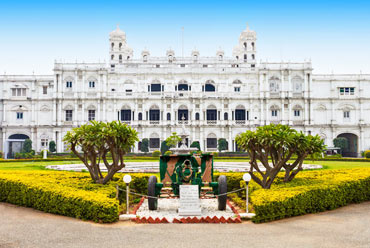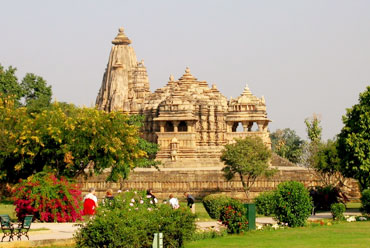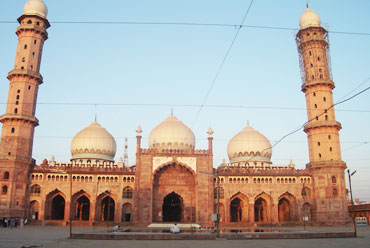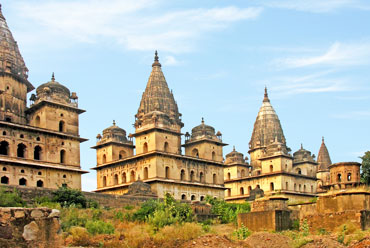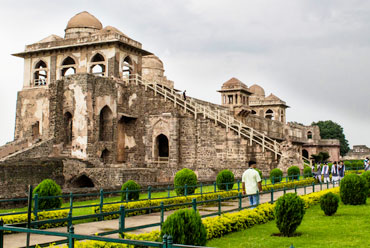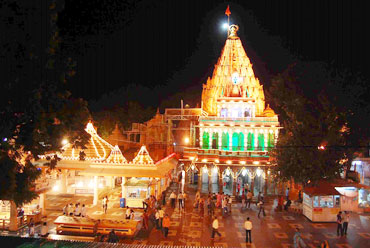Tourist Attractions in Gwalior
The mighty Gwalior Fort was built in the 15th century by Raja Mansingh Tomar on a hilltop that overlooks the city. The outer wall of the fort stands two miles in length and 35 m in height. A steep road winds upwards to the fort, flanked by statues of the Jain Tirthankaras, carved into the rock face.
Man Mandir is the Fort's piece de resistance. The palace built by Man Singh Tomar is a delicate structure exhibiting a sense of joy and abandon through use of color, motif, and design. There are chambers for affairs of state as well as those for relaxation, adorned appropriately and ornately with carved animals, flowers, and the human form.
If Man Mandir reflects Man Singh's aesthetic sensibilities, Gujari Mahal speaks of his love. The courage and beauty of Mrignayani and her love with Raja Mansingh are now a part of popular folk tradition. The palace has been now converted in a museum and houses very good collection of Jain and Hindu artifacts.
Contrasting with the predominant north Indian style of architecture is the Teli-ka-Mandir. This temple is believed to the oldest in the Fort, built in the ninth century and Dravidian in form. The sculptures are distinctly north Indian. Some believed it was so named because it was built in the Telangana style; others say this was because it was built by telis (oil merchants). A more recent study ascribes it to Telap Raj, a prime minister of the region.
The Sas-Bahu temples, in another part of the Fort, are not, as people believe, dedicated to a mother-in-law (Sas) and daughter-in-law (Bahu). Sas-Bahu is the name traditionally given to two adjoining temples of different sizes. The larger of the two is profusely sculpted with graceful figures and intricate patterns. This is more apparent in the interior where, above the sculpted walls and pillars, an elaborately carved lotus adorns the roof.
The chhatris, memorials to former Scindia rulers, are executed in the typical Bundelkhandi style with conical spires and heavily carved exteriors.
At another point in the city is the tomb of Mohammad Ghaus. Although of little importance from a historical perspective, the sheer beauty of the tomb is breathtaking. The stone carving for which the skilled artisans of Gwalior were justly famous is apparent in the huge panels of lacy screen work, which combine with an interesting architectural design to create a delicate, ethereal appeal.
Adjacent is a small white, austere tomb. This is the memorial to Tansen, a famed musician, and one of the nine gems of the Mughal emperor Akbar's court.
Much of modern Gwalior is associated with the Scindias who were prolific builders. The Jai Vilas Palace at Lashkar is an opulent Italianate structure, set in carefully laid lawns. Part of the palace is used as a residence for the family while the other has been converted into a museum that effectively documents a more leisurely and princely lifestyle. The museum exhibits, consisting of collections of the Scindia family, include such things as chandeliers weighing several tons, a silver toy train whose wagons were used as serving dishes, and a glass cradle from Italy used for the Lord Krishna at Janmashtami.
Other important tourist attractions in the city are Surya Mandir (sun temple), a replica of the famed Konark Sun Temple in Orissa, Baija Taal cultural complex, museum of the freedom fighters, and Kala Vithika.
Places Around Gwalior
Shivpuri: (112 km) on the Agra-Bombay Road is famous for its Madhav National Park and the Chhatris (memorials to former rulers).
Chanderi: (239 km) is a well-preserved medieval town famed for the craft of sari weaving, with beautiful structures executed in the Bundelkhandi style.
Orchha: (120 km), former capital of the Bundela Rajputs, has interesting palaces and temples. Other interesting places include Datia (69 km), Marwar (122 km), and Pawaya (68 km).

